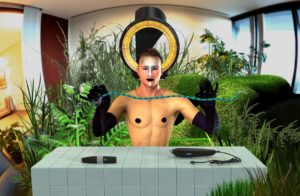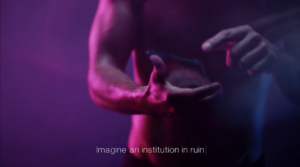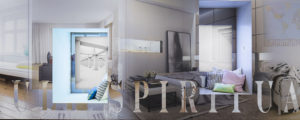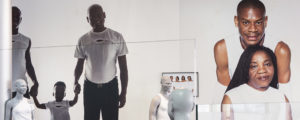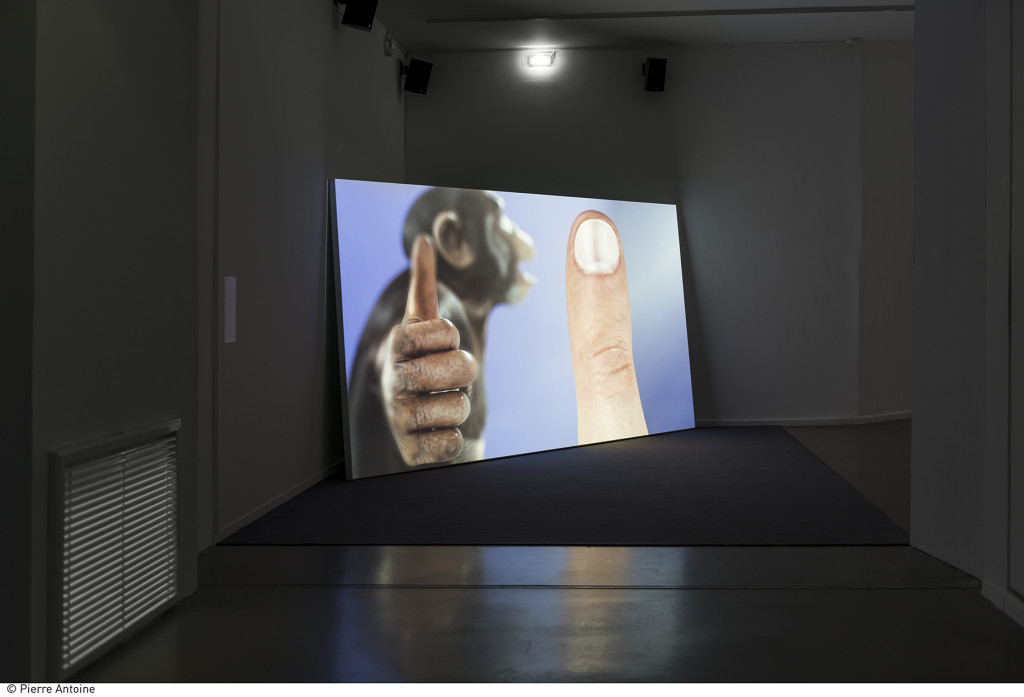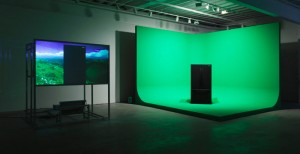Recently, Warner Brothers issued Vimeo with a Digital Millennium Copyright Act (DMCA) takedown notice, which is essentially a standardised letter explaining the incorporated entertainment company has the copyright to a film that has been illegally uploaded to the video hosting site. In this case, however, it was a false accusation, given the film was not the original but a machinic remix of the 1982 AI tech-noir cult classic Blade Runner. It had been entirely constructed by an artificial neural network called an Autoencoder rather than a film studio; a unique program created by Terence Broad. The artist and researcher taught the machine to watch the film and then reconstruct it from disassembled data. Its remix of Blade Runner —which ironically tells the story of a progressive form of artificial intelligence indistinguishable from mankind and fighting for its own autonomy —was so good at directing and reapplying the data it couldn’t be distinguished from the manmade original.
This story of re-programmed culture and the question of authentic output came to mind while wandering through the endless stalls and booths of the 9th Berlin Biennale (BB9)’s ‘The Present in Drag’ biennial, curated by DIS and recently opening in five different locations of the German capital, all programmed replicants of each other. Aside from a slight variation in accessories or interior décor, the motherboard was ultimately the same. Each work mirrored the next, seamlessly creating an uber-mindful glass army, all sipping spirulina juice whilst in downward dog dropping selfies on Instagram. It sounds like utopia right? At times, yes, there’s cool air and an outlandish philosophy being propagated through highly rendered 3D movies and Shutterstock footage. Softly one droops into oversized lounging bean bags among their exfoliated, shiny, contemporary counterparts. Could this be peace on urban earth?
Maybe. But is this really the art world at present –clean, conscious and business-like? The press release claims, “That as a theme ‘the present’ strikes a slightly desperate tone. Like a spin-call instructor trying to power through a massive hangover.” DIS would like to welcome you to the ‘post-contemporary’, a word that has been coined and repeated through various mouths in the last weeks; some slurred, some enigmatic, and others naively. Amusingly both post-’ and ‘contemporary’ have connotations of desperation to be noted as progressive and historically worthy; raising questions on whether the machine needs credit for its products.
BB9 makes one wonder whether every young artist’s dream now is to be part of a gaping macro-void living on chia seeds and Dom Perignon, while producing endless images of handsome rat-eating protagonists, brutalist glass castles in wild overgrown forests, or lusting after spiritual mayonnaise jars. As you walk through the streams of images, it all looks very familiar. The only thing to awaken you from the trance of a feeling of having been here before is the standardised message tone of not only yours, but hordes of other viewers’ iPhones. This may seem like a mundane observation, but at this point things start to become clearer. Is this new ‘site’ acting as just another contact point for accelerated new nihilistic consumerism; a sterilized commercial venture (trading only in petty ideological horror), with its airport aesthetic trademarks and start-up software sitting prettily in the background?
Writer and theorist Mark Fisher coined the term ‘Capitalist Realism’ in 2009. It’s a concept which takes the form of super-identification with capital, a position precluding any possibility for acting in opposition to it. Throughout the Biennale, many artists attempt to play the double-hand, suggesting, ‘Yes, I’m in the biennale and, yes, its DIS but really I find capitalism vulgar’. DIS has a very specific approach to valorized aesthetics, which they just about pull off through their incongruous musings from their collective online platform DIS Magazine. Mixtapes with titles like How to Fuse Trends & Alienate People are nestled between pieces on Alex Williams and Nick Srnicek’s ‘Accelerationist Manifesto’ and Angela Merkel and Condoleezza Rice Scarves retailing at around $145 online. But in seeing this approach IRL it starts to grate on you. It becomes more desperate. You’re unable to just click yourself out it —when everything is ironic nothing is. Creative branding and corporate aesthetics with art becomes just un-political and integrated, they outline the tired, weak and ineffective politics that appears to lie at the heart of emerging contemporary art today.
Negation of site via the techno-void on and offline has been vital in this leap of acceleration and formatting of cultural imagery/products in today’s hip youth dichotomy of capital and culture. Subversive realms began glitch-ing and fading away through the process of standardization; when post-internet artists started surfacing across art fairs in 2012, offering fixed technocapital the chance to conjoin seamlessly within aesthetics of neo-contemporary culture. It offered a hybrid-leftist consumer a muted form of anarcho-capitalist freemasonry: satiric in gesture, but adaptive, gratifying, and seemingly homegrown. This way, one is not just crassly buying into capital when loving capital-progressive aesthetics.
Anarcho-capitalism is enacted through peer-to-peer foundations like infamous trend forecaster K-HOLE, or open-source groups (online) such as Ikea made fashion, ytinifninfinity, or the ever-wearable Vetememes rip-off trend. One could argue that artists like Debora Delmar Corp. or Nik Kosmas are in opposition to the semi-corporate cultural accelerationist aesthetics of DIS Magazine. In BB9, DDC’s mint smoothies nods toward ‘greenwashing’ —a PR tool which gives your product a green sheen that doesn’t live up to its actual ethical standards. This could be seen as antagonistic in relation to the ‘cultural capital’ accumulated from events like biennales. Kosmas’ garish structures also offer a healthy foundation for simple training sessions, including a power rack, squat rack and weight rig used once a week for a 75-minute training session at the price of 10€. Both functional sculptures have a certain proletarian persona through their principal efforts of self-oriented and wellness-via-viewer interaction. But one wouldn’t dare say this may not align with DIS in the glass halls of the Akademie der Kunst. It’s too precarious. It’s too crass to speak of political alignments post-1968. We also saw how badly it turned out for Artur Żmijewski when he invited Occupy demonstrators in 2012 to occupy the Biennale —it was dubbed the very last gasp of air for the movement by Noah Fischer in Field Journal, as well as the worst Biennale (to date) by many young contemporary artists, alienating both art viewer and activist with its vanilla statement-making.
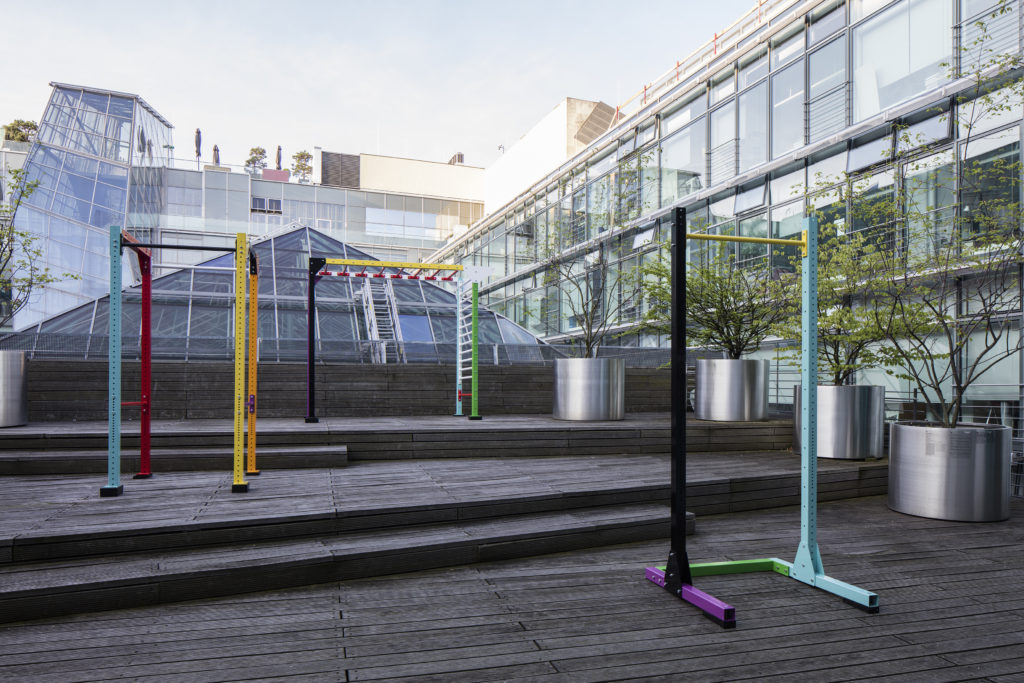
This lack of radicality aligns with the dis-innovation of the internet at present, as it becomes tamer, less diverse, more grounded and more homogenous. The dream started to fade along with the ready acceptance of ‘post-internet’ as a genre with which to be affiliated —last summer no one would be seen petrified in it but now the label is one worn with brazen pride. LA-based artist Petra Cortright is the best example of this shift. One of the first digital artists to enjoy commercial success, she credulously and ironically just renounced the internet in a recent interview with Amuse:
“I think the Internet is becoming this really gentrified place. Today’s forms of social media feel more like people’s personal brands. Now it’s just people promoting their shit constantly and it makes stuff on the Internet less weird. Everything feels more censored.”
It’s a curious statement from the artist with one of the most commercially endorsed artist Instagram accounts, from sunlit Nike crop top selfies to endless shots of ready-to-wear Elyse platform shoes and #Avene skincare moments. Self-motivated plagiarism, unity and peer enthusiasm seems to be the Kool-Aid of choice for the BB9 —offering sites of contact where inevitable capital extraction seeps into the daily use-value both on- and offline. That’s either through prosumerist data collection —likes, shares, tags —or, in extreme examples, of hand-in-hand partnerships like Cortright’s with Adidas Sportswear or Stella McCartney, all creating an endorsed product for the creatively-aligned consumer.
The line-up of young artists involved in BB9 seem to have every intention of becoming part of this system; living comfortable and unified lives, but not in any revolutionary sense. In fact, many of the artists at BB9 address the home as a place of purity, untouched or tainted by others. In the future everyone will have his or her own pod, sterile and homely. The well waxed lyrical “no-man is an island” adage comes to mind when looking at these weaponised cannons for a better future, from Timur Si-Qin, M/L Artspace or åyr. Their installations point limply to some critical afterthought of community but their impotence sits neatly and cleanly between white-walled islands, cushions and pot plants —then the words “No artist is unique” sink in.
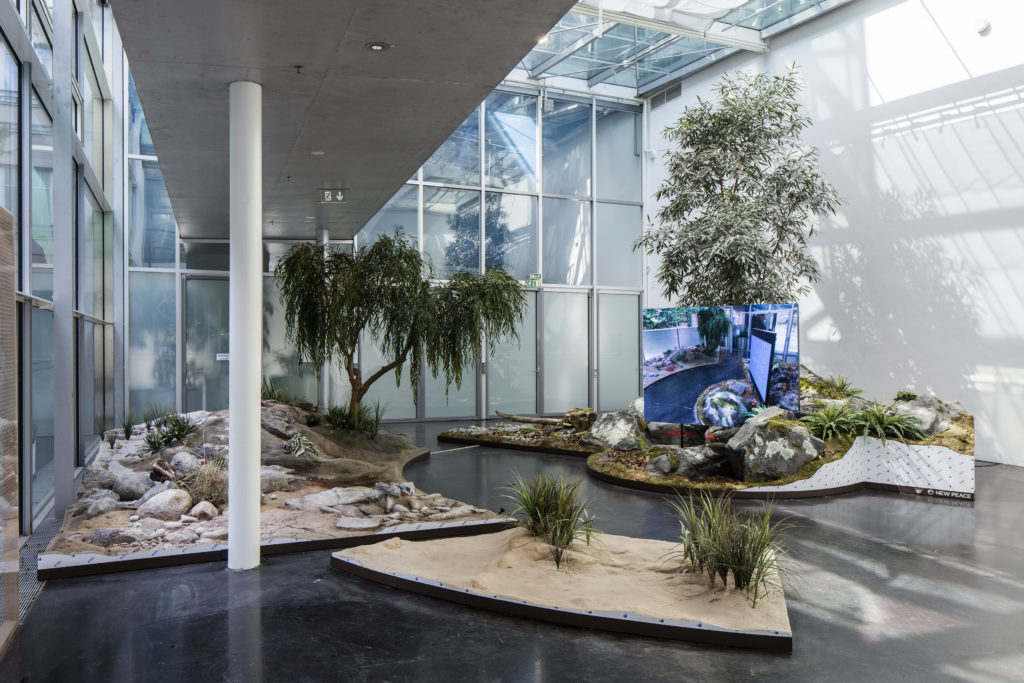
Is it so passé to be subversive now? Better to be programmed, productive and sold than join the legions of unemployed artists stalking Instagram hungrily everyday, watching and lusting after this hyper-capital form. Confronted with unemployment, high rents and health insurance, one would rather be an Art Bot than take the risk of a failing career in today’s political and economic climate. Young artists today often have no money of their own, no other assets barring their nomadic user-ship and, in that position it’s difficult to progress physically or culturally because fear is always sitting a little too close to the free bar. Yet, nothing matters (really) and nothing exists (really) to this generation, in this virtual day-to-day. Life is a constant ebb of pixels, and why should we be called on to exist within society? The neo-future seems more like no future. The time of the community has now gone and we live in a state of dualism ruled by the individual and the Ego but that doesn’t always rescue us from the lonely nights of the Self.
Like Terence Broad’s new machinic director, these artists have fulfilled the task at hand; to replicate cultural capital for the masses by the masses but this does not mean they cannot do anything else. To quote Blade Runner’s Dr. Tyrell of humanoid slave manufacturer Rosen Corporation, “More human than human is our motto”. When it comes to the 9th Berlin Biennale and the slew of emerging and emergent artists it represents, one certainly questions the point of humankind and its posited salvation. On walking out of KW, a young blonde girl hands me a little white envelope. I smile, take it and carry on walking. Inside the small package there’s a single card with blood-red ink that issues the typed message “it’s your timing” –soft, personal and comforting but ultimately mass-produced.**

